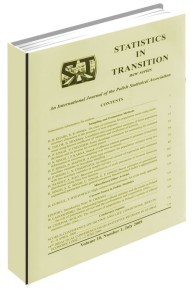OUTLIER DETECTION IN THE ANALYSIS OF NESTED GAGE R&R, RANDOM EFFECT MODEL
OUTLIER DETECTION IN THE ANALYSIS OF NESTED GAGE R&R, RANDOM EFFECT MODEL
Author(s): Mohammed Abduljaleel, Habshah Midi, Mostafa KarimiSubject(s): Economy
Published by: Główny Urząd Statystyczny
Keywords: measurement system analysis; mm location; nested Gage R&R; outlier; residuals
Summary/Abstract: Measurement system analysis is a comprehensive valuation of a measurement process and characteristically includes a specially designed experiment that strives to isolate the components of variation in that measurement process. Gage repeatability and reproducibility is the adequate technique to evaluate variations within the measurement system. Repeatability refers to the measurement variation obtained when one person repeatedly measures the same item with the same Gage, while reproducibility refers to the variation due to different operators using the same Gage. The two factors factorial design, either crossed or nested factor, is usually used for a Gage R&R study. In this study, the focus is only on the nested factor, random effect model. Presently, the classical method (the method of analysing data without taking into consideration the existence of outliers) is used to analyse the nested Gage R&R data. However, this method is easily affected by outliers and, consequently, the measurement system’s capability is also affected. Therefore, the aims of this study are to develop an identification method to detect outliers and to formulate a robust method of measurement analysis of nested Gage R&R, random effect model. The proposed methods of outlier detection are based on a robust mm location and scale estimators of the residuals. The results of the simulation study and real numerical example show that the proposed outlier identification method and the robust estimation method are the most successful methods for the detection of outliers.
Journal: Statistics in Transition. New Series
- Issue Year: 20/2019
- Issue No: 3
- Page Range: 31-56
- Page Count: 26
- Language: English

